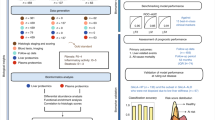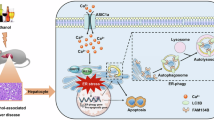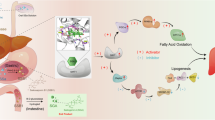Abstract
Alcoholic liver disease (ALD) is one of the pathogenic factors of chronic liver disease with the highest clinical morbidity worldwide. Ursolic acid (UA), a pentacyclic terpenoid carboxylic acid, has shown many health benefits including antioxidative, anti-inflammatory, anticancer, and hepatoprotective activities. We previously found that UA was metabolized in vivo into epoxy-modified UA containing an epoxy electrophilic group and had the potential to react with nucleophilic groups. In this study we prepared an alkynyl-modified UA (AM-UA) probe for tracing and capturing the target protein of UA from liver in mice, then investigated the mode by which UA bound to its target in vivo. By conducting proteome identification and bioinformatics analysis, we identified caspase-3 (CASP3) as the primary target protein of UA associated with liver protection. Molecule docking analysis showed that the epoxy group of the UA metabolite reacted with Cys-163 of CASP3, forming a covalent bond with CASP3. The binding mode of the UA metabolites (UA, CM-UA, and EM-UA) was verified by biochemical evaluation, demonstrating that the epoxy group produced by metabolism played an important role in the inhibition of CASP3. In alcohol-treated HepG2 cells, pretreatment with the UA metabolite (10 μM) irreversibly inhibited CASP3 activities, and subsequently decreased the cleavage of PARP and cell apoptosis. Finally, pre-administration of UA (20–80 mg· kg−1 per day, ig, for 1 week) dose-dependently alleviated alcohol-induced liver injury in mice mainly via the inhibition of CASP3. In conclusion, this study demonstrates that UA is a valuable lead compound for the treatment of ALD.
Similar content being viewed by others
Log in or create a free account to read this content
Gain free access to this article, as well as selected content from this journal and more on nature.com
or
References
Louvetand A, Mathurin P. Alcoholic liver disease: mechanisms of injury and targeted treatment. Nat Rev Gastroenterol Hepatol. 2015;12:231–42.
Osna NA, Donohue TM, Kharbanda KK. Alcoholic liver disease: pathogenesis and current management. Alcohol Res. 2017;38:147–61.
An L, Wang X, Cederbaum A. Cytokines in alcoholic liver disease. Arch Toxicol. 2012;86:1337–48.
Zhou Z, Sun X, Kang YJ. Ethanol-induced apoptosis in mouse liver: Fas- and cytochrome c-mediated caspase-3 activation pathway. Am J Pathol. 2001;159:329–38.
Natori S, Rust C, Stadheim LM, Srinivasan A, Burgart LJ, Gores GJ. Hepatocyte apoptosis is a pathologic feature of human alcoholic hepatitis. J Hepatol. 2001;34:248–53.
Purohit V, Gao B, Song BJ. Molecular mechanisms of alcoholic fatty liver. Alcohol Clin Exp Res. 2018;33:191–205.
Liu RH. Health-promoting components of fruits and vegetables in the diet. Adv Nutr. 2013;4:384S–92S.
Shanmugam MK, Dai X, Kumar AP, Tan BK, Sethi G, Bishayee A. Ursolic acid in cancer prevention and treatment: molecular targets, pharmacokinetics and clinical studies. Biochem Pharm. 2013;85:1579–87.
Baek S, Lee J, Lee D, Park MK, Lee J, Kwok SK, et al. Ursolic acid ameliorates autoimmune arthritis via suppression of Th17 and B cell differentiation. Acta Pharmacol Sin. 2014;35:1177–87.
Cargninand ST, Gnoatto SB. Ursolic acid from apple pomace and traditional plants: a valuable triterpenoid with functional properties. Food Chem. 2017;220:477–89.
Liu J. Oleanolic acid and ursolic acid: research perspectives. J Ethnopharmacol. 2015;100:92–4.
Chen SR, Chen XP, Lu JJ, Wang Y, Wang YT. Potent natural products and herbal medicines for treating liver fibrosis. Chin Med. 2005;10:7.
Seo DY, Lee SR, Heo JW, No MH, Han J. Ursolic acid in health and disease. Korean J Physiol Pharmacol. 2018;22:235–48.
Saraswat B, Visen PKS, Agarwal DP. Ursolic acid isolated from Eucalyptus tereticornis protects against ethanol toxicity in isolated rat hepatocytes. Phytother Res. 2000;14:163–6.
Saravanan R, Viswanathan P, Pugalendi KV. Protective effect of ursolic acid on ethanol-mediated experimental liver damage in rats. Life Sci. 2006;78:713–8.
López Hortas L, Pérez Larrán P, González Muñoz MJ, Falqué E, Domínguez H. Recent developments on the extraction and application of ursolic acid: a review. Food Res Int. 2017;103:130–49.
Ma XY, Zhang Y, Wang ZY, Shen YB, Zhang M, Nie QD, et al. Ursolic acid, a natural nutraceutical agent, targets caspase3 and alleviates inflammation-associated downstream signal transduction. Mol Nutr Food Res. 2017;61:1700332.
Hu XY, Shen YB, Yang SN, Lei W, Cheng L, Hou YY, et al. Metabolite identification of ursolic acid in mouse plasma and urine after oral administration by ultra-high performance liquid chromatography/quadrupole time-of-flight mass spectrometry. RSC Adv. 2018;8:6532–9.
Xiang YW, Johnson EA, Zhang C, Huang GL, Hayes RL, Wang KKW, et al. Generation of aberrant forms of DFF40 concurrent with caspase-3 activation during acute and chronic liver injury in rats. Biochem Biophys Res Commun. 2006;350:457–62.
Fang B, Boross PI, Tozser J, Weber IT. Structural and kinetic analysis of caspase-3 reveals role for s5 binding site in substrate recognition. J Mol Biol. 2006;360:654–66.
Aşula MF, Onur IU, Yigit FU. Efficacy of fumagillin bicyclohexylamine on experimental corneal neovascularization in rat model. Int Ophthalmol. 2019;39:1553–8.
Becker J, Jennifer R, Soisson SM, Renee A, Christopher B, Sébastien F, et al. Reducing the peptidyl features of caspase-3 inhibitors: a structural analysis. J Med Chem. 2004;47:2466–74.
Feeney B, Pop C, Swartz P, Mattos C, Clark AC. Role of loop bundle hydrogen bonds in the maturation and activity of (Pro)caspase-3. Biochemistry. 2006;45:13249–63.
Nanji A. Apoptosis and alcoholic liver disease. Semin Liver Dis. 1998;18:187–90.
Castaneda F, Rosin-Steiner S. Low concentration of ethanol induce apoptosis in HepG2 cells: role of various signal transduction pathways. Int J Med Sci. 2006;3:160–7.
Tait SW, Green DR. Mitochondria and cell death: outer membrane permeabilization and beyond. Nat Rev Mol Cell Biol. 2010;11:621–32.
Decker P, Muller S. Modulating poly (ADP-ribose) polymerase activity: potential for the prevention and therapy of pathogenic situations involving DNA damage and oxidative stress. Curr Pharm Biotechnol. 2002;3:275–83.
Hengartner MO. The biochemistry of apoptosis. Nature. 2000;407:770–76.
Feoktistova M, Leverkus M. Programmed necrosis and necroptosis signalling. FEBS J. 2015;282:19–31.
Dassé E, Bridoux L, Baranek T, Lambert E, Salesse S, Sowa ML, et al. Tissue inhibitor of metalloproteinase-1 promotes hematopoietic differentiation via caspase-3 upstream the MEKK1/MEK6/p38α pathway. Leukemia. 2007;21:116–9.
Shafaghati L, Razaghi-Moghadam Z, Mohammadnejad J. A systems biology approach to understanding alcoholic liver disease molecular mechanism: the development of static and dynamic models. Bull Math Biol. 2017;79:2450–73.
Nomuraand DK, Maimone TJ. Target identification of bioactive covalently acting natural products. Curr Top Microbiol Immunol. 2019;420:351–74.
Lee H, Shin EA, Lee JH, Ahn D, Kim CG, Kim JH, et al. Caspase inhibitors: a review of recently patented compounds (2013-2015). Expert Opin Ther Pat. 2018;28:47–59.
Silver LL. Fosfomycin: Mechanism and resistance. Cold Spring Harb Perspect Med. 2017;7:a025262.
Baskin Bey ES, Washburn K, Feng S, Oltersdorf T, Shapiro D, Huyghe M, et al. Clinical trial of the pan-caspase inhibitor, IDN-6556, in human liver preservation injury. Am J Transpl. 2007;7:218–25.
Castro MM, Fuah J, Ali M, Sung M, Schulz J, Kondo MY, et al. Inhibitory effects of caspase inhibitors on the activity of matrix metalloproteinase-2. Biochem Pharmacol. 2013;86:469–75.
Han W, Sun YY, Wang XY, Zhu CL, Blomgren K. Delayed, long-term administration of the caspase inhibitor Q-VD-OPh reduced brain injury induced by neonatal hypoxia-ischemia. Dev Neurosci. 2014;36:64–72.
Wang ZG, Watt W, Brooks NA, Harris MS, Urban J, Boatman D, et al. Kinetic and structural characterization of caspase-3 and caspase-8 inhibition by a novel class of irreversible inhibitors. Biochim Biophys Acta. 2010;1804:1817–31.
Jeong HG, Kim HG, Hwang YP. Involvement of cytokines in the hepatic expression of metallothionein by ursolic acid. Toxicol Lett. 2005;155:369–76.
Chang JO, Kil IS, Park CI, Yang CH, Park JW. Ursolic acid regulates high glucose-induced apoptosis. Free Radic Res. 2007;41:638–44.
Lee YH, Wang E, Kumar N, Glickman RD. Ursolic acid differentially modulates apoptosis in skin melanoma and retinal pigment epithelial cells exposed to UV–VIS broadband radiation. Apoptosis. 2014;19:816–28.
Radhiga T, Rajamanickam C, Sundaresan A, Ezhumalai M, Pugalendi KV. Effect of ursolic acid treatment on apoptosis and DNA damage in isoproterenol-induced myocardial infarction. Biochimie. 2012;94:1135–42.
Yang Y, Li CW, Xiang X, Dai ZL, Chang JY, Zhang M, et al. Ursolic acid prevents endoplasmic reticulum stress-mediated apoptosis induced by heat stress in mouse cardiac myocytes. J Mol Cell Cardiol. 2014;67:103–11.
Somova LO, Nadar A, Rammanan P, Shode FO. Cardiovascular, antihyperlipidemic and antioxidant effects of oleanolic and ursolic acids in experimental hypertension. Phytomedicine. 2003;10:115–21.
Acknowledgements
This research was funded by a grant from the National Key R&D Program of China (No. 2018YFC1704500), Guangxi Innovation-driven Development 20 Special Foundation Project (Guike No. AA18118049), and Guangxi Collaborative Innovation Center for Functional Ingredients Study of Agricultural Residues (No. CICAR 2019-Z3).
Author information
Authors and Affiliations
Contributions
GB and YYH designed the study and drafted and edited the manuscript; XYM performed the experiments and acquired and analyzed the data; MZ and GF performed CASP3 protein purification; CJC analyzed the mass spectrum data; MKW performed the molecular dynamic simulation and docking experiments. MZ and YMH assisted with the experiments. XTH and EWH contributed to the data discussion and review of the manuscript.
Corresponding author
Ethics declarations
Competing interests
The authors declare no competing interests.
Supplementary information
Rights and permissions
About this article
Cite this article
Ma, Xy., Zhang, M., Fang, G. et al. Ursolic acid reduces hepatocellular apoptosis and alleviates alcohol-induced liver injury via irreversible inhibition of CASP3 in vivo. Acta Pharmacol Sin 42, 1101–1110 (2021). https://doi.org/10.1038/s41401-020-00534-y
Received:
Accepted:
Published:
Issue date:
DOI: https://doi.org/10.1038/s41401-020-00534-y
Keyword
This article is cited by
-
Network pharmacology-based investigation of the pharmacological mechanisms of diosgenin in nonalcoholic steatohepatitis
Scientific Reports (2025)
-
Polyphenols and terpenoids derived from Ocimum species as prospective hepatoprotective drug leads: a comprehensive mechanistic review
Phytochemistry Reviews (2025)
-
Protective role of ursolic acid against cisplatin-induced oxidative stress and ferroptosis in the liver of Swiss albino mice
Medical Oncology (2025)
-
Efficient analysis of the toxicity and mechanisms of Hexaconazole and two other triazole fungicides: insights from integrated network toxicology, molecular docking and bioinformatics data
Genome Instability & Disease (2025)
-
Potential value and chemical characterization of gut microbiota derived nitrogen containing metabolites in feces from Periplaneta americana (L.) at different growth stages
Scientific Reports (2021)



